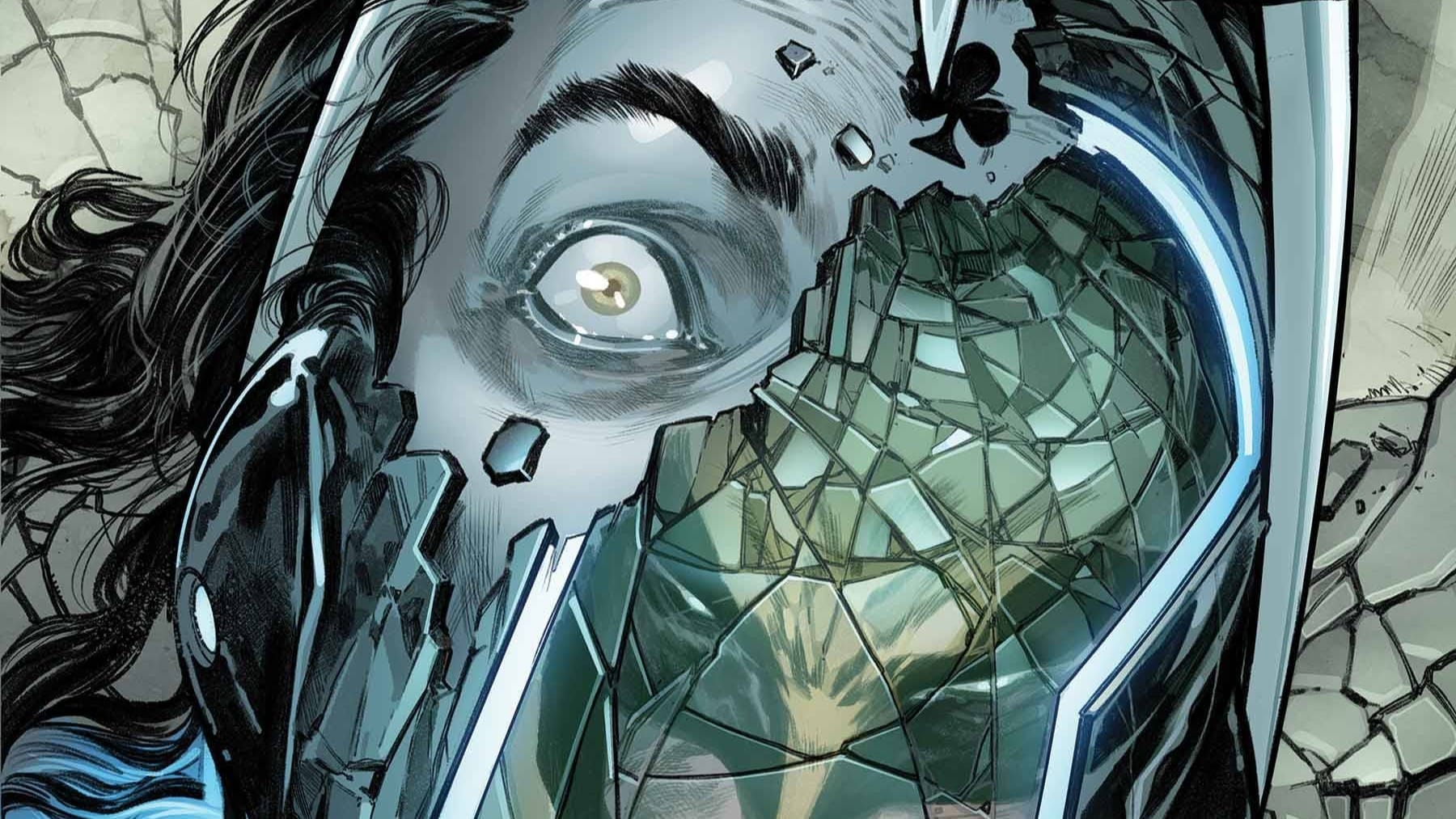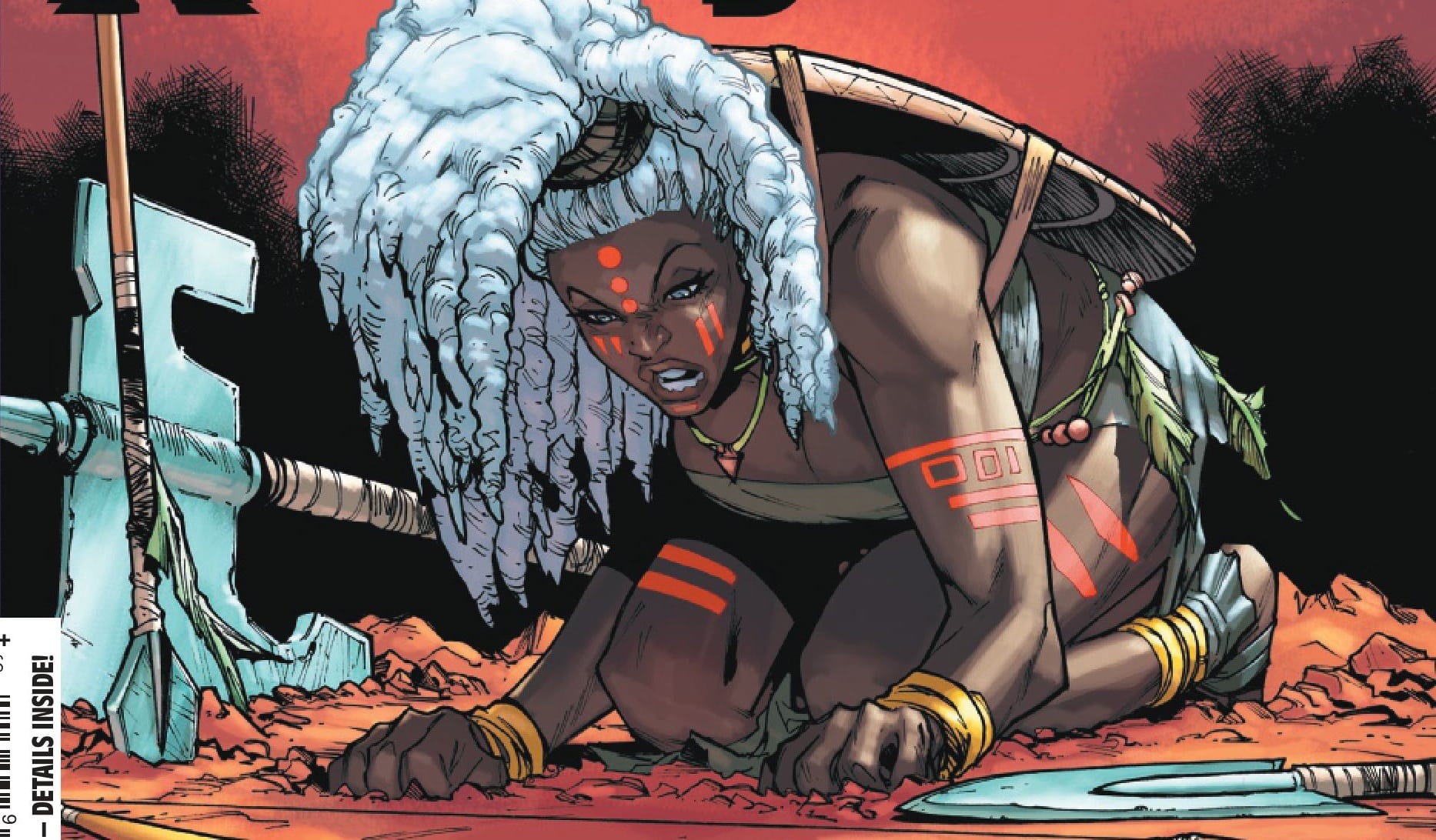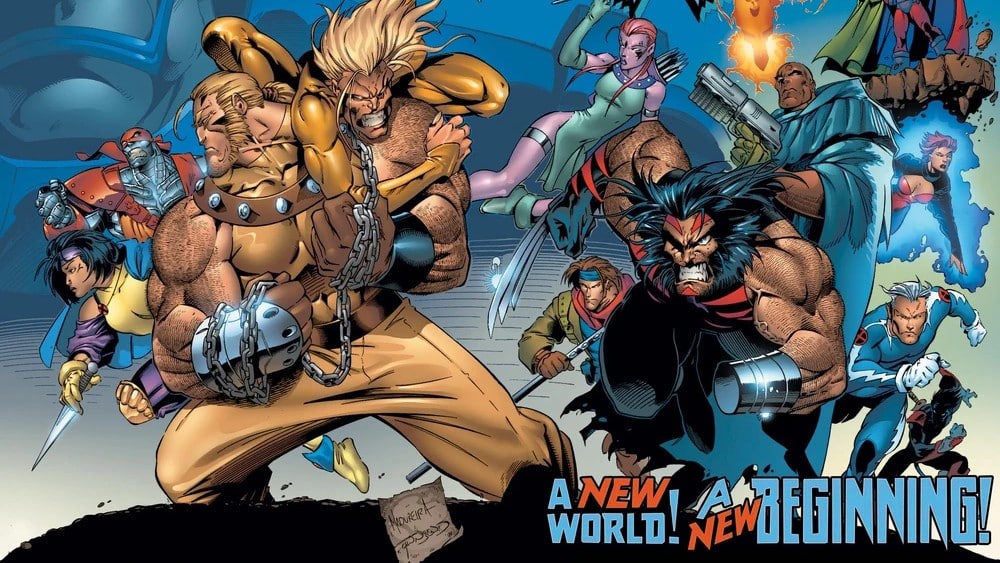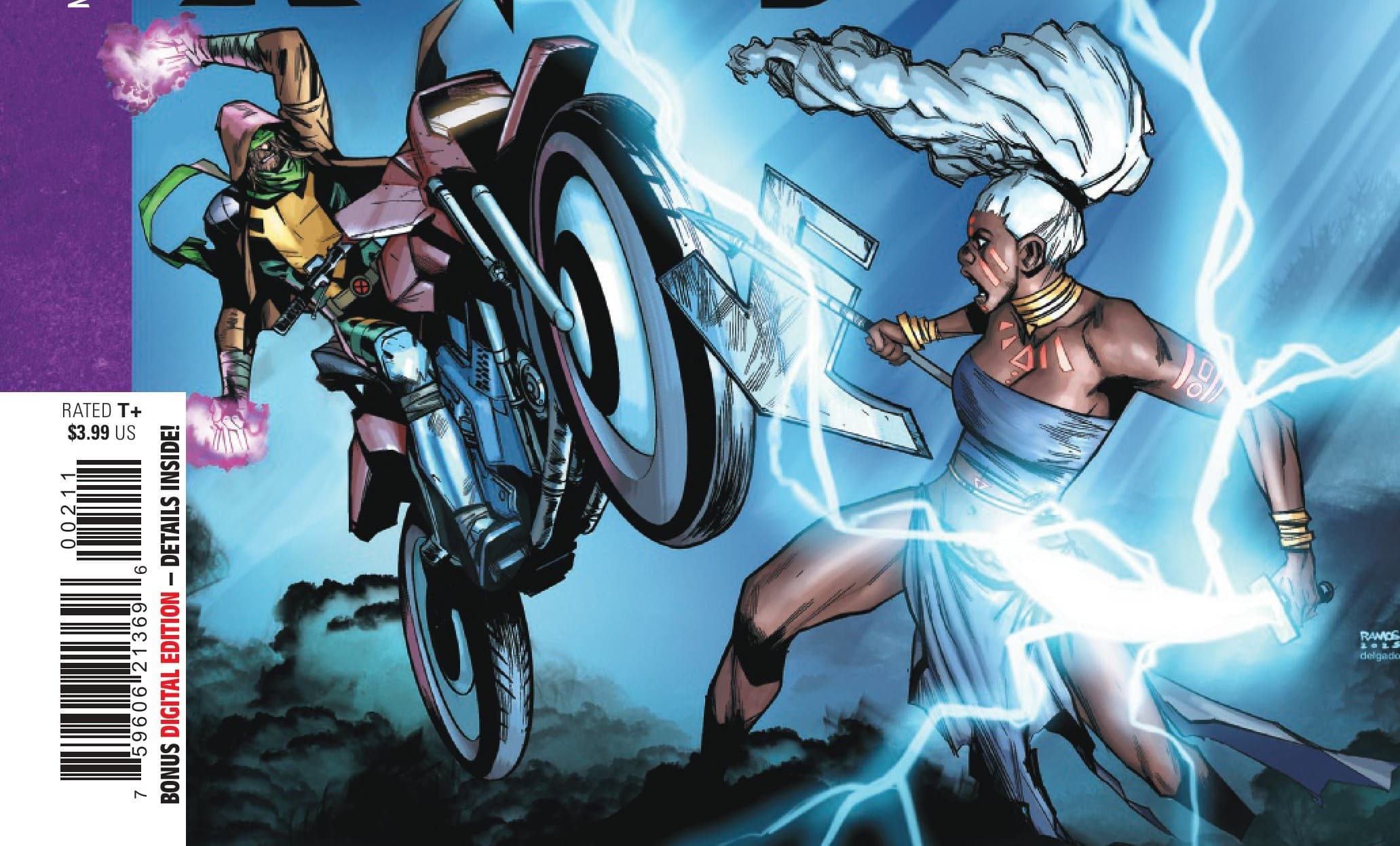Cyclops and his new bestie Dr. Gregor take the fight to Nimrod while Doctor Stasis meets his ends in Fall of the House of X #3 written by Gerry Duggan, art by Lucas Werneck & Jethro Morales, colors by Bryan Valenza, and letters by Travis Lanham.
Jake Murray: If you’ve read Fall of the House of X #3, it’ll be apparent to you by now that, at least in the battle against Orchis, the mutants will almost certainly win. But, and I don’t want to be dramatic here…. at what cost? If the price is Scott Summers proclaiming that he has “everything in common” with one of the chief architects of his people’s genocide, then it’s too high a price to pay. Yet here we are…
Anna Peppard: Equally confounding is the fact that I’m here. Didn’t I already do my due diligence on this book? Yet here I am, ready to rail on it again. Except that’s not really my mood this month. At this point, I’m less angry or even frustrated with this series than I am fascinated by its badness. Naturally, I’m no stranger to badness. If you’ve read a lot of X-Men comics, you’ve read a lot of bad ones. That’s just math.
But this comic isn’t just bad — it’s weirdly bad. It’s not like watching a car crash; that simile is entirely too grandiose. It’s more like the experience of trying to Sherlock Holmes your way through the tangled intentions of a term paper that was submitted at four in the morning a day after it should have been due — the circumstances that put this stuff on these pages feel far more interesting than the actual stuff on these pages.
Jake Murray: Definitely, and I think it’s fair to say that the time pressures really tell on this issue, even if Lucas Werneck does his strongest work on the series so far. His usual care and attention to character expressions and incredible looks, in addition to some of the larger scale work he does in this issue, appears to have taken precedence over a second pass at his layouts. It’s apparent from the ending in particular (as well as Jethro Morales being brought in to assist) that he’s run out of time, with the sword of Damocles that is ‘Sentinel City’ hastily revealed in two panels squeezed onto the final page.
This still doesn’t explain the biggest problem I have with Fall of the House of X #3 though. It’s a matter of custodianship, and the level of care given to finishing this story. How did we get from “Did you honestly think we were going to sit around forever and just take it?” to “The X-Men are here for everyone”? How did we get from a radical reimagining of what the X-Men are and could be to a total and utter reversion to the centrist mean? If the creators have checked out of the dream that became real, why shouldn’t we?
Anna: Because we’ve got a review to write, of course!
Jake: Right! Sorry, let’s begin then.
Your Friendly Neighborhood X-Men

Jake: One of the two key strands of this issue is the newly-found alliance of Scott Summers and Dr. Alia Gregor (former Head of Research and Development at Orchis), and their plan to take down the AI leg of the anti-mutant megacorp. No back up, no weapons, just two best friends ready to take on the world with the simple dream of mutant-human harmony. Stop me if you’ve heard this one before.
Anna: This was one of many sequences from this issue where I found myself experiencing second-hand embarrassment as a writer who has, admittedly, written some decidedly embarrassing things at various times in my life. Mostly the teenage times in my life. Mostly the teenage fanfiction times in my life.
This sequence depicts Dr. Gregor as a stammering, fearful woman who needs to be led around by the hand of a blind Cyclops because she wouldn’t know how to walk otherwise. And listen — there’s no love lost between me and Lady Hitler. But this version of Scott “I could escape anytime I want!” Summers doesn’t strike me as cool, so much as someone a tween writing him as their OC would think is cool. That’s not a knock on tween OCs — they’ve gotten me through some tough times!
Yet it’s a symptom, I think, of the ways in which the story at hand feels greatly diminished from a larger context of 4+ years of other (better) stories. Instead of building on and deepening the existing story, it feels like we’re reverting to well-worn tropes just to get the job done. And that job is ending the Krakoa Era as quickly as possible.
Jake: Let’s talk about Dr. Alia Gregor for a second. On paper, she’s a fascinating character. A woman responsible for creating a machine of hate and death as a perverse expression of grief and love, who was then forced to grieve all over again when her husband sacrificed himself for her. She is an oppressor, and everything she has done since Hickman’s X-Men #20 has been to advance the human cause.
Yet unbeknownst to her, she’s been an intended victim of the all-consuming designs of the machine all along. Above all else, she will not be without power, she will not be a victim. It’s this fear and paranoia that prompts her alliance with the mutants, which she doesn’t try to hide from Cyclops. Scott’s naivety in this situation in no way resembles the man with more contingency plans than there are letters in the alphabet, so when Duggan tries to establish pathos for Dr. Gregor through Cyclops in this scene, I mostly feel like my intelligence is being insulted.
Anna: Honest question, did Scott Summers not previously perceive Nimrod as psychotic? Surely that would have to be the case in order to explain his no-doubt soon-to-be-iconic rejoinder, “YOU PSYCHO!” Or did he simply overhear a tween rip that sweet burn in a middle school cafeteria and think it seemed rad? Equally perplexing is that this moment of proposed profundity is preceded by Dr. Gregor’s death being depicted with all the gravitas of an Animaniac gawking at a pair of gams — her soft pasta neck sure spins the whole way round, huh? Again — she’s a very, very bad person. It’s not the death itself I necessarily have an issue with. But this series has been consistently plagued by tonal inconsistencies, and this felt like more of the same — a thing that was meant to be serious instead seems disturbingly comedic, not to mention (on Scott’s part), bafflingly out of character.
The Adequacy of Murder

Jake: The other key plot thread in the issue is Emma Frost, Shadowkat and Firestar going up against Dr. Stasis. Firestar, having helped Tony Stark lure the Orchis’ Sentinels to the Australian outback, has been discovered as a double agent by Dr. Stasis, who has stowed her away somewhere as collateral. Luckily, Firestar managed to put a tracking device on him, allowing Emma and Kate to remove Stasis’ psychic blocker in order to locate and rescue her. Emma then proceeds to kill Stasis by using his fear of mutants to cause him to have a heart attack.
This was odd to me, given that Stasis’ strategy all along was to stoke up other people’s fear of mutants through sheer opportunism rather than being afraid himself. This decision makes the analogy to the very real presence of fascism less effective as it characterizes him as a raving loon rather than someone so desperate for power they are willing to forsake all morality. Duggan has been guilty of cartooning up his villains for a while now in favor of attempts at political commentary, and this is another big example of that.
Anyway, shortly after Stasis’ demise, Firestar arrives on the scene and ostensibly kills him again.
What are your thoughts on the manner of Stasis’ death, and this plot line generally?
Anna: I personally think it would be more satisfying to watch Angelica roast her iconic arch-nemesis Bonnie but that’s just my two cents. I had more feelings about Emma’s unpardonably uncreative deconstruction of Stasis. Punishing a villain by making them experience their greatest fears was already done to death in the 80s. That’s why “Dark Phoenix Saga” and “The Man Who Has Everything” both invert it. Do better, Emma — there are children watching.
Also, Synch is there! Once again, the future leader of the X-Men is reduced to having convenient powers for a couple of panels so we can — here’s that phrase again — get the job done. In this case, the job is telling the stories of people who aren’t Synch.
Goodbye Arakko?

Jake: I can hardly bring myself to say it, but we might have seen the end of Arakko as an independent and core component of X-Men stories in this issue. For those of us who have immersed ourselves in Al Ewing’s X-Men Red and in the culture and customs of the Arakki over the last two years, there’s a sense of grief that comes with this issue. This isn’t because it provided a sense of closure or pathos, it’s because it felt like the characters at the core of the best story of the post-Hickman era were ushered through the doors of a giant spaceship to be released into the black hole of obscurity with little more than a “Hiya, sugahs.”
Anna: Yeah, it doesn’t look good when you’re evacuating your planet right before a line-wide relaunch… This sequence was also another example of something Adam and I griped about in last month’s review, which is the way the compressed storytelling (in terms of both script and visuals) keeps leading to head-scratching moments where you find yourself asking — wait, where are we, how, and why? The Arakki team jumps out of a spaceship, in space, equipped with nothing but space helmets, and are going to, I guess, attack the enemy with their bare hands and then fall gracefully back to Earth? Some of these folks can probably do that! But if you can’t fly (or if your ability to fly is dependent on atmosphere), and you’re not invulnerable, and you don’t have cosmic-style energy powers — surely this would simply kill you?
We all know superhero comics trade in the impossible, and we all love this about them. But there is a difference between credulously impossible things and incredulously impossible things. Here, I don’t understand what I’m supposed to be anticipating or excited about, because it’s unclear how this attack force is actually meant to effectively attack the enemy.
Speaking of attacking the enemy — I’m not a big Star Wars guy, but I’m led to believe that franchise includes something called a Death Star that’s some kind of superweapon or somesuch? Just occurs to me it bears a striking resemblance, in both form and function, to the Sentinel City that’s ostensibly spectacularly revealed at the conclusion of this issue. As a person who’s watched every episode of the original Battlestar Galactica, I’m not against stealing stuff from Star Wars. But maybe there’s a time and a place. And maybe the time and place isn’t the supposedly senses stunning revelation of a multi-year storyline. Just sayin’.
X-Tra Facts
- “If we don’t do Dracula proper…” You’re right, Kate. Doing Dracula does deserve to be done properly.
- I couldn’t bring myself to complain about the “Juggernaut hauling Krakoa” sequence, because we already complained about it last month. It remains silly.
- I also don’t want to talk about Kate’s hair but I guess I already started, so — despite having a clear flair for fashion, Lucas Werneck kinda falls into the same trap a lot of artists do when drawing short hair on a female character, in that the haircut he draws is not very cool. To be fair, Kate Pryde is not very cool (affectionate). But I personally feel this young woman deserves something better than one of those bobs everyone’s mom had in the 90s.
- The callback to Destiny’s prophecy feels very phoned-in. Remember when data pages used to mean something? Sigh…







